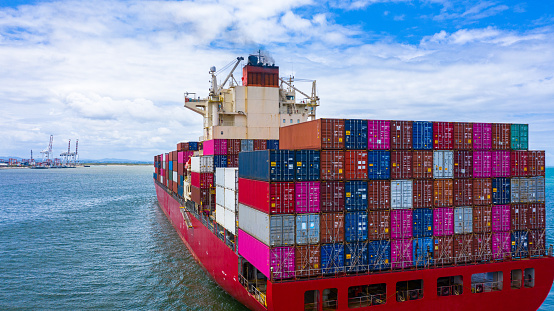Professional Customs Clearance from Shenzhen to Australia
Managing cross-border shipping requires strong compliance, accurate documentation, and efficient processing. Choosing professional customs clearance from Shenzhen to Australia helps companies avoid delays, reduce inspection risks, and ensure smooth cargo movement under Australia’s strict regulatory environment. This guide covers clearance timelines, document requirements, transport comparisons, challenges, and real import cases.
What Makes Professional Customs Clearance from Shenzhen to Australia Essential?
| Advantage | Explanation |
|---|---|
| Fewer delays | Accurate filings prevent unnecessary inspections |
| Correct duty calculation | Proper HS codes avoid penalties |
| Predictable schedules | Clearance certainty improves delivery timelines |
| Lower risk exposure | Reduces reassessment or fines |
How Long Does Customs Clearance Take for Shipments to Australia?
| Shipping Mode | Clearance Time | Notes |
|---|---|---|
| Air Freight | 6–24 hours | Fastest entry mode |
| Sea Freight | 1–3 days | Longer during high season |
| LCL Cargo | 2–4 days | Extra consolidation steps |
| Express Courier | 6–12 hours | Pre-lodged documents |
How Much Does Customs Clearance Cost for Australia-Bound Cargo?
| Service | Estimated Cost (USD) | Description |
|---|---|---|
| Customs Entry | $80–$150 | Standard declaration |
| Duty & GST Calculation | Varies | Based on HS code and valuation |
| Biosecurity Fee | $40–$90 | For organic or wooden materials |
| Inspection Fee | $50–$120 | If shipment is flagged |
What Documents Are Required for Customs Clearance?
| Document | Purpose |
|---|---|
| Commercial Invoice | Declares shipment value |
| Packing List | Provides cargo breakdown |
| Bill of Lading / AWB | Transport contract |
| HS Code | Determines duties and taxes |
| Certificate of Origin | Needed for specific items |
| Biosecurity Declaration | Mandatory for regulated goods |
What Are the Main Challenges During Customs Clearance?
| Challenge | Description |
|---|---|
| Biosecurity Rules | Strict controls on wood, plants, food |
| Incorrect HS Codes | Causes duty reassessment |
| Missing Certificates | Delays cargo release |
| Packaging Issues | May require fumigation treatment |
What Real Cases Demonstrate Effective Customs Clearance?
Case 1: Shenzhen to Sydney — Electronics
Cargo: 420 kg electronics
Mode: Air freight
Clearance: 12 hours
Cost: USD 110
Result: Early submission enabled same-day delivery.
Case 2: Shenzhen to Melbourne — Furniture
Cargo: 1×40HQ mixed furniture
Mode: Sea freight
Clearance: 2 days
Cost: USD 160
Result: Correct fumigation avoided quarantine delays.
Case 3: Shenzhen to Brisbane — Apparel
Cargo: 9 CBM clothing
Mode: LCL
Clearance: 3 days
Cost: USD 95
Result: Accurate HS codes minimized duty charges.
Why Should You Choose Professional Clearance Services?
| Method | Advantages | Disadvantages |
|---|---|---|
| Professional Clearance | Accurate, faster, fewer risks | Service fee applies |
| Self-Managed Filing | Lower upfront cost | High error potential |
| Consultation Only | Guidance on requirements | No operational handling |
How Can You Reduce Clearance Delays?
Importers can significantly reduce delays by preparing documentation correctly and following Australian regulations. Strategies include submitting paperwork early, using accurate HS codes, complying with biosecurity requirements, and ensuring proper cargo labeling.
What Is the Full Customs Clearance Process?
| Step | Description |
|---|---|
| Pre-shipment Review | Check documents and HS codes |
| Export Paperwork | Submit invoice, packing list |
| Cargo Departure | Goods move via sea or air |
| Import Lodgment | Declaration submitted to Australia |
| Assessment | Duties and GST evaluated |
| Biosecurity Check | Inspection if needed |
| Final Release | Cargo delivered to importer |
Conclusion
Choosing professional customs clearance from Shenzhen to Australia ensures smoother import processing, reduces compliance risks, and improves delivery reliability. With expert support, businesses can avoid delays, maintain regulatory accuracy, and build a stronger international supply chain.
FAQ
What goods benefit most from professional clearance?
High-value, sensitive, or regulated products gain the most from expert China–Australia customs support.
How early should documents be submitted?
Submitting documents several days before departure speeds up the China–Australia clearance process.
Do wooden goods require additional checks?
Wooden packaging must meet biosecurity rules to avoid clearance delays for China–Australia shipments.
Can clearance errors affect total delivery time?
Error-free documentation prevents unexpected China–Australia customs delays that slow delivery.
Is LCL cargo more likely to be inspected?
LCL loads undergo extra verification because cargo mixing increases China–Australia inspection risk.
How can duties be legally minimized?
Correct HS codes and accurate values help reduce China–Australia import duty assessments.
Which industries rely on clearance services?
Electronics, textiles, furniture, cosmetics, and machinery sectors depend on China–Australia clearance.
Are express shipments easier to clear?
Express shipments clear faster because data is pre-lodged, improving China–Australia processing.




